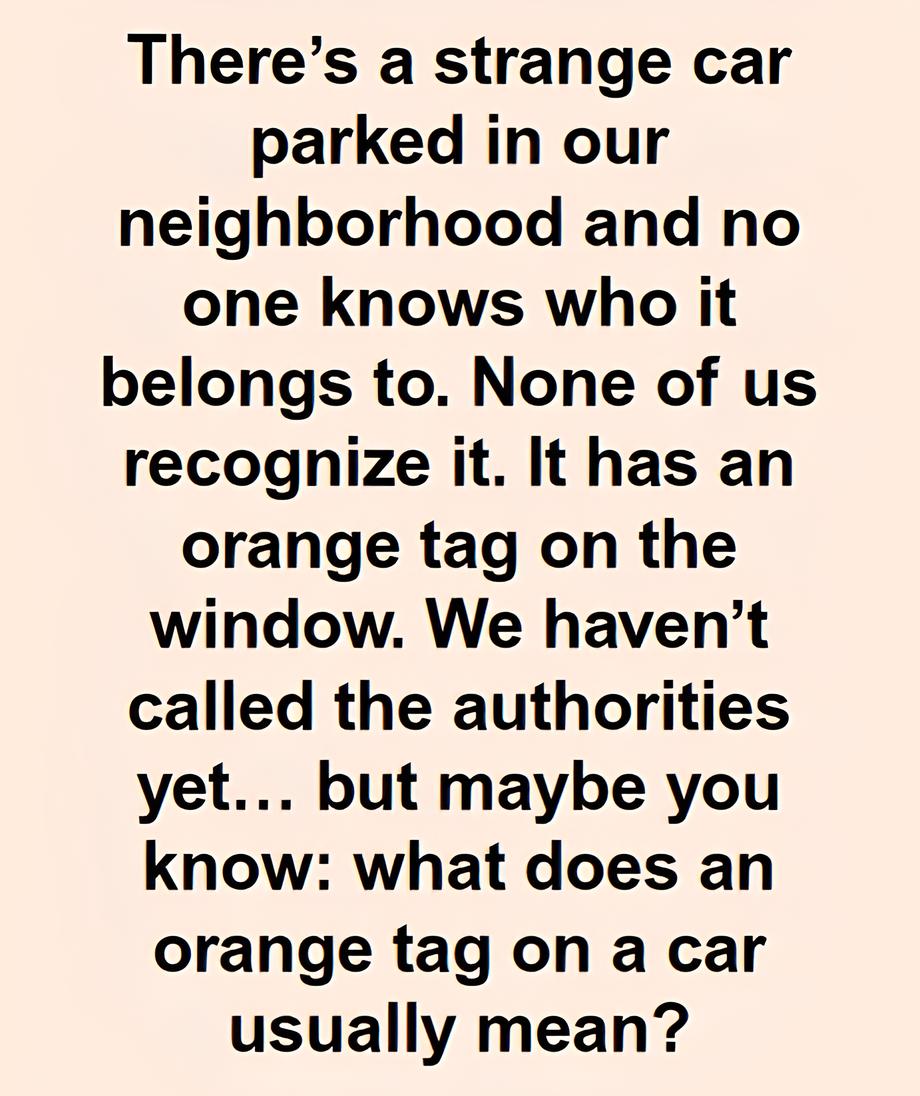If you ever come back to your parked car and notice a bright orange tag stuck on the windshield or rear window, don’t ignore it. That tag isn’t just a warning—it’s a serious notice from your local authorities, and it means your vehicle could be in jeopardy. These orange tags are used by law enforcement or city officials to identify cars that may be abandoned, inoperable, or considered a hazard to the community. It’s their first step in the legal process to have the vehicle removed or impounded.

The tags may look simple, but they carry a strong message: action is required, and time is not on your side. Authorities don’t place these tags randomly. They typically target vehicles that appear neglected or potentially dangerous. There are a few main reasons why a car might receive an orange tag. First, if a car is visibly inoperable—maybe it has flat tires, is missing wheels, has shattered windows, or looks like it hasn’t moved in weeks—that’s enough to raise suspicion. Second, long-term parking in one spot without movement, especially on public streets, can trigger a tag even if the car looks fine. Third, any vehicle that poses a safety risk—like blocking driveways, obstructing traffic flow, or being parked too close to intersections—can be flagged for removal.
Each city and state has slightly different laws, but the basic idea remains the same: if a vehicle isn’t being used or maintained properly, it can be tagged. Timing is critical when it comes to these orange notices. In some places, a vehicle can be tagged as abandoned after just 72 hours. That’s only three days, and if you’re out of town or unaware, your car could be towed before you even realize there’s a problem. Other locations may offer a longer grace period, but generally, it’s a short window before enforcement ramps up.
Once a tag is placed, the clock starts ticking, and ignoring it can lead to costly consequences like impound fees, storage charges, or even losing your car entirely if it’s auctioned off. So what should you do if you find an orange tag on your car? The first and most important step is to contact your local parking enforcement office or police department immediately. Ask why your vehicle was tagged and what actions are required to resolve the issue. They’ll let you know what the tag means in your specific area and what timeline you’re working with. Next, address the reason your car was tagged. If it’s not operable, consider moving it to your driveway or a private location where local ordinances don’t apply in the same way. If repairs are needed, make arrangements quickly and keep documentation.
if the issue was long-term parking, simply relocating the vehicle may be enough to avoid further action. In cases where you believe the tag was issued in error, check to see if there’s an appeal process. Many cities allow car owners to dispute a tag if they believe it was placed unfairly. This may require evidence like photos, receipts, or documentation proving the vehicle is operational and properly registered. Don’t wait too long to start this process—responding quickly can be the difference between keeping your car and having it towed away. Understanding what orange tags represent is key to preventing unnecessary fines, legal trouble, and the stress of retrieving your car from impound. They aren’t issued lightly, and they usually indicate that the vehicle is creating a problem for the community. Whether it’s safety, aesthetics, or accessibility, these tags are part of a larger effort to keep public spaces safe and functional. For car owners, this means staying informed and acting fast when one appears. Keep your registration up to date, don’t let your vehicle sit in one spot too long, and make sure it’s roadworthy to avoid getting flagged in the first place. If you do see an orange tag on your car, take it seriously, find out what needs to be done, and act quickly to resolve the issue and protect your vehicle from being impounded.





